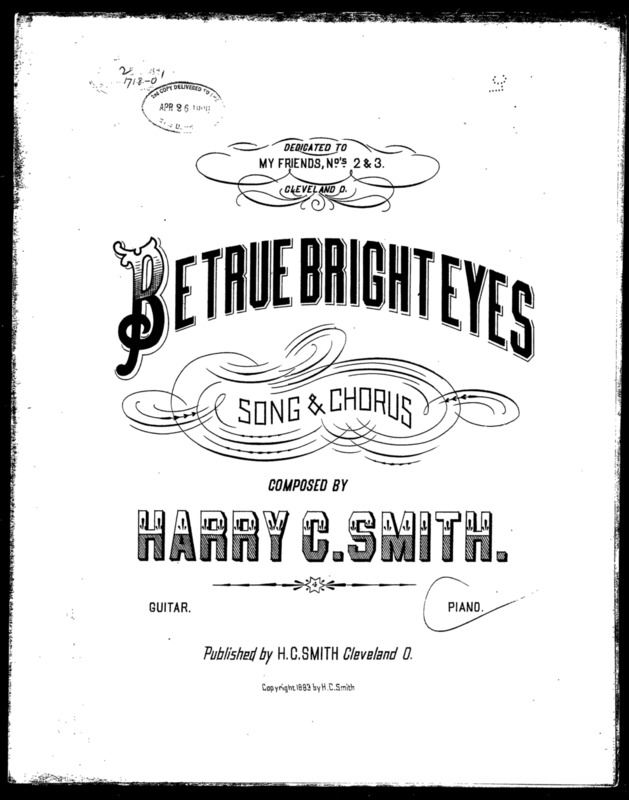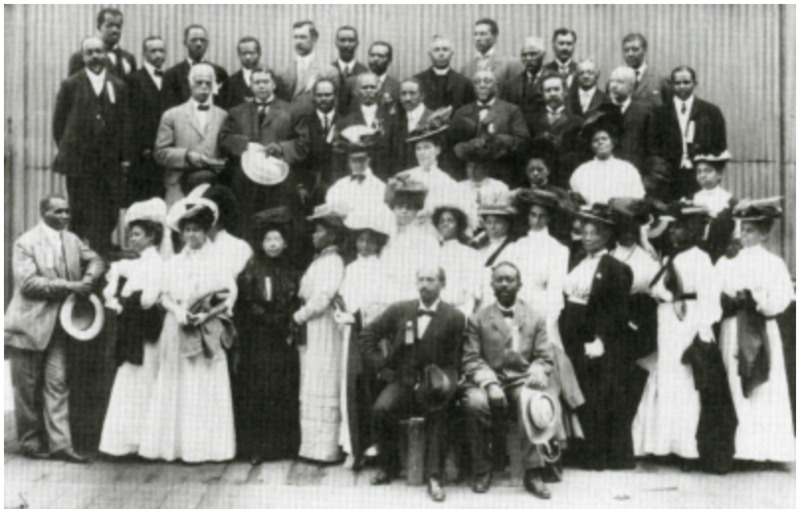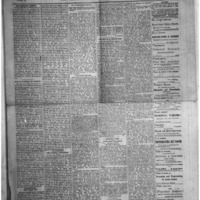Harry Smith and the Cleveland Gazette
Harry Clay Smith published the Cleveland-based weekly, Cleveland Gazette (later, the Gazette) from August 25, 1883 to May 20, 1945. Differently from most other 19th-century Black newspapers, the Cleveland Gazette has been preserved perfectly and digitized to our observation, mainly because of the editor’s reputation as a politician and the newspaper’s remarkable longevity. The paper was born out of the political strife for Black civil rights, and continued to focus attention upon issues such as racial discrimination, the state of civil rights, and Black American citizenship. The paper was also loyal to the Republican party, although the editor was aware of the limitation of a partisan solution to racial inequality and white supremacy. The Cleveland Gazette follows the protest tradition of 19th-century Black newspapers that resulted from Black Americans’ conventions movement. However, while maintaining its strong voice for Black readership, the Cleveland Gazette could secure a broad range of subscribers that enabled the paper to become the longest-publishing African American weekly among the Black newspapers initiated in the 19th century U.S.
Harry Clay Smith (January 28, 1863 - December 10, 1941) was born in Clarksburg, West Virginia in 1863. After the Civil War, his parents moved to Cleveland and sent their children to one of America’s first public schools. Smith attended Central High School, from which Langston Hughes also graduated 18 years later than him. In 1882, while still in high school, he worked as a correspondent for papers in Indianapolis, Cincinnati, and Springfield. And during his senior year, he wrote for a weekly paper, the Cleveland Sun. Right after graduation, Harry Smith and other three journalists started the Cleveland Gazette in August 1883: John F. Lightfoot, President; John Holmes, Vice President; James H. Jackson, Secretary and Treasurer; and Harry Smith, Managing Editor, establishing the Gazette Publishing Company. He soon bought out each of his partners and became a sole proprietor in 1888, as he financed the paper through Republican party contributions, earnings from rental property ownership, and printing jobs.[1] In addition to his career as a journalist, Smith gained fame as a musician. Upon high school graduation, he directed a number of Cleveland-based Black orchestras, brass bands, and vocal groups such as the Excelsior cornet band. He also composed several popular songs including “Be True, Bright Eyes,” which is the most widely known piece of his musical works. [2]
The Cleveland Gazette has been considered a tool for Smith to disseminate his political and ideological views in its most militant form, as it retained an uncompromising integrationist stance unequaled by any other Black periodicals.[3] For example, here is an excerpt from “Why We Publish the Gazette” on the inaugural issue:
We want absolute impartiality in newspaper treatment, and when we fail to get it from white papers we forthwith go to publishing and editing newspapers ourselves--hence the Globe, the Recorder, and other papers published to proclaim the wrongs, and demand redress for the people. Not at all--we do not draw the [color] line. But when others draw, as they do, we simply demand that they, “shinny [sic] on their own side.”[7]
Although most Black newspapers were not a lucrative business, his contemporary Black leaders like William Simmons and Henry McNeal Turner stress that Smith’s paper is “not only paying its way but is actually making money.”[4] Under Smith’s business-savvy management and distinctive political agenda, the Cleveland Gazette gained the affectionate nickname, “old reliable,” because the paper did not miss a Saturday publication in 58 years. Its circulation was estimated between 5,000 and 18,000. William Sanders Scarborough, the first African American classical scholar and president of Wilberforce University between 1908 and 1920, comments on Harry Smith:
Though at times Mr. Smith has been severely criticized, he has never varied from what he considered his duty. He believed that the Republican party conserves best the interests of the negro, and thereupon he becomes its able and active defender. He believes that mixed schools are the best for all concerned, and especially for the negro--as separate schools imply race prejudice and race inferiority--and therefore he becomes the relentless enemy to the color line in schools. His articles are read with both pleasure and profit, to which fact is largely due the increased and increasing circulation of The Gazette.[5]
In the beginning period of the Cleveland Gazette, the paper had clearly asserted its mission to be a political force for Black Americans in the midst of the 1883 Supreme Court decision that revered the 1875 Civil Rights Act. However, in 1896, the year of the Plessy vs. Ferguson “separate, but equal” decision, Smith sought a new strategy of using journalism for social change. By the mid-to-late 1890s, the explicit tone of Smith’s political voice faded, although Harry Smith’s integrationist stance never swayed. Instead, the newspaper paid more attention to general interests of local Black communities.[6]
While serving as the editor of the Cleveland Gazette, Smith had a remarkable career as a politician. He was elected to represent Cuyahoga County three times between 1893 and 1899 in the Ohio Legislature. His voice was crucial to the enactment of Ohio’s Civil Rights Law in 1894. He also introduced an anti-lynching law, the “Act for the Suppression of Mob Violence,” in 1896, which modeled similar acts in other states. Smith’s activism went beyond the state. He attended the inaugural meeting of the Niagara Movement as one of the representatives from fourteen states, who became known as “the Original Twenty-nine.” However, after 1912 his political influence in Cleveland’s Black community substantially diminished.[8] After his death in 1941, the Gazette struggled to continue its publication, but it finally folded in 1945.
The Ohio Black Press in the 19th Century hosts thirteen issues of the Cleveland Gazette from August 25 to December 29, 1883, which specially addressed the Civil Rights cases.
[1] William J. Simmons and Henry McNeal Turner, Men of Mark: Eminent, Progressive and Rising (GM Rewell & Company, 1887), 195. Documenting the American South.
[2] I. Garland Penn, The Afro-American Press and Its Editors, 1891. Reprinted by Arno Press (1969), 280.
[3] Kenneth L. Kusmer adds the Boston Guardian as one possible exception. Kusmer, A Ghetto Takes Shape: Black Cleveland, 1870-1930 (University of Illinois Press, 1978), 130.
[4] Simmons and Turner, 196.
[5] Penn, 282.
[6] See Summer E. Stevens and Owen V. Johnson, "From Black Politics to Black Community: Harry C. Smith and the Cleveland Gazette," Journalism Quarterly, vol. 67, no. 4 (December 1990): 1090-1102.
[7] Cleveland Gazette, August 25, 1883, page 1.
[8] Kusmer, 133.




